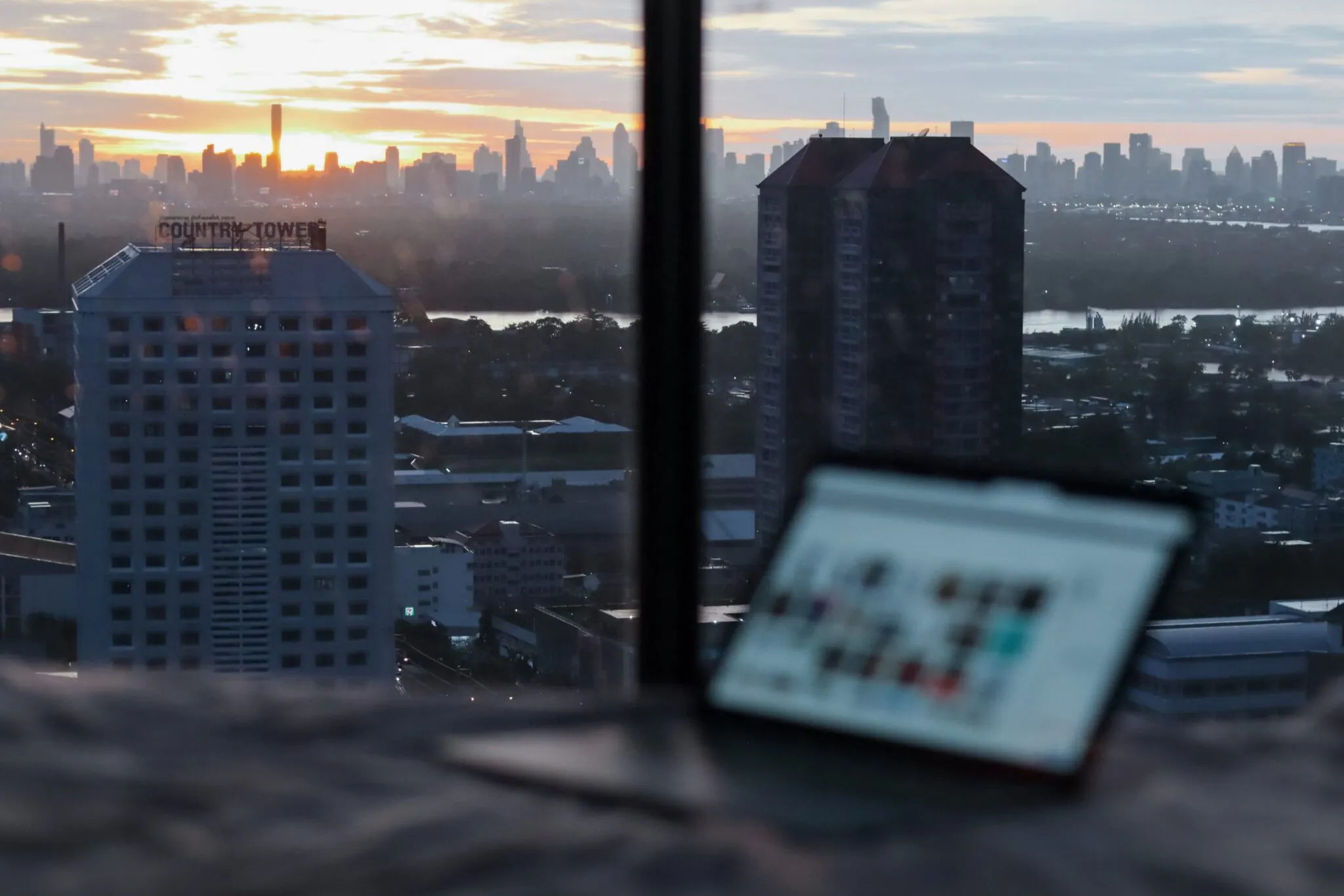What do you think the world will look like by 2030? Or even 2050? What about 2070? How will we live, and how will we work? Will new technologies revolutionize our design philosophy regarding the future workspace?
There have been predictions going around from hybrid models of labor to open offices to the proliferation of remote work. And it’s certainly true that COVID-19 has resulted in a paradigm shift that has accelerated the adoption of these new technologies. Over 7 years of digital transformations have occurred in only a span of months according to a study from McKinsey.
Let’s talk about the current trends that have arisen in the past few years and where they are headed. What exactly does the modern office workspace look like, and is it closer than we once thought?
1. Investments in Workspace Health and Hygiene Will Go Up
It should be obvious that another pandemic is the last thing anybody wants. Workspace health and cleanliness suddenly became an even bigger topic than it already was as a result of COVID lockdowns. Even regular offices with no apparent risk beforehand were given upgraded ventilation systems, disinfectant tools, and regular cleaning protocols.
The pandemic has encouraged over 80% of businesses to hire more sanitation staff to ensure a safe environment for both employees and visiting customers.
Wellness goes beyond cleanliness, however. Many companies chose to increase mental health benefits in response to the pressures of living in a lockdown environment for so long. Employee assistance programs rose in participation during this time too for the same reason.
2. Sustainability Gets a New Spotlight
Addressing climate concerns will be an even bigger topic as customers, companies, and governments alike see the value in ensuring sustainability and cutting down on our carbon footprint.
Some firms have even hired dedicated staff and teams to address sustainability by reviewing policies and checking on related goals and expectations.
“The digitization of the office helps immensely in this regard. Not only can you enable remote teams to work from home and avoid expending travel-related emissions, but also track your progress through digital processes and record-keeping.”
3. People Will Demand More Transparency From Higher-Ups
Accountability is becoming a common theme. Recent months have made lower-level employees more demanding of their management groups when it comes to being transparent about events and business strategies. Even the administrators themselves strive to keep staff and clients informed of their intentions, as doing so:
- Keep your eye on the ball when it comes to corporate goals and objectives
- Fosters employee loyalty
- Let staff know what their roles and responsibilities are in the firm
- Attracts the right type of employees when you’re looking for new hires
A disturbing trend in corporate culture in recent years is everyone blindly agreeing to everything the company does out of fear of seeming like an outcast from the team. Businesses should strive to encourage two-way communication and allow for disagreements no matter their nature. Everyone should have an opportunity to express an opinion without fear of getting fired.
To that end, social media, online forums, and unified communications allow for proactive feedback from staff. Be willing to open up transparency and allow anybody to ask questions regarding leadership and business initiatives.

4. Customers Are Going Digital
A large driving force behind the sudden digital transformations of many companies is consumer demand shifting towards online shopping rather than brick-and-mortar stores. Food deliveries were made online, and shipping a new appliance over Amazon became the norm. This trend began well before the pandemic, but it certainly sped up as a result of everyone having to stay indoors all day.
The implication for businesses here is that their sales and marketing teams must focus even more on Internet-enabled interactions with customers rather than face-to-face ones. Digital investments went up significantly to $1.3 trillion globally in 2020, and they continue to grow.
5. The Rise of Remote Work is Part of the Future Workspace
Here’s a trend that certainly wasn’t popular before COVID. Most businesses had to scramble to generate remote modern office workspace environments when the pandemic hit with varying degrees of success. Nonetheless, this trend had several important side effects on the labor market:
While in-house employees won’t necessarily disappear for all industries, the modern future workspace must be more agile, allowing for partial remote operation at all times. The driving force behind this change will be the quality of remote unified communications every business has access to.
Some features that businesses should consider as part of their unified communications include an in/out-of-office indicator. In a hybrid model that we’ll discuss later, knowing which staff members are on-site or off-site at any given time can be incredibly useful for employee management.
And now that everyone is carrying a smartphone around (or even a wearable smart device), some companies use Beacons to track the location of workers during office hours no matter where they are. This way, you don’t have to “clock in” necessarily to be credited with your efforts. Remember to follow any international regulations like the EU’s GDPR regarding how you can capture, store, and use employee data.
6. The Popularity of the Hybrid Work Model
The truth is that not all industries will go 100% remote. Some jobs simply require the physical presence of the staff or rely on it heavily for optimal operations. For these cases, the hybrid work model will certainly gain traction.
Hybrid work combines the benefits of on-site staff with the flexibility of remote workers. Employee preferences can vary greatly in this regard, as some might enjoy on-site while others prefer remote.

- On-site members prefer the traditional in-office role where they can meet with others face-to-face and have a direct connection with the company. These people might not have robust home offices and prefer the professional environment that on-site work has to offer.
- Remote work makes more sense to other types of employees, who might find themselves more productive at home thanks to better flexibility and less time wasted traveling to the office every day. These individuals like to have control over how they live at home while still offering their services to the business. Even the company itself might save some money from reduced consumption of office resources.
- Hybrid work combines many of the advantages of both models. It’s not uncommon for an organization to have part of the team in the office and the other part at home. The latter group might occasionally meet up physically with the former for a comprehensive meeting if necessary.
It’s clear that the hybrid model is popular with workers themselves. The Pulse of the American Worker Survey reported that 87% of employees preferred to work remotely at least one day a week. Management only has to ensure that remote workers don’t end up left behind, as it can be easy to forget about the staff you don’t see every day.
“Hybrid work is ultimately part of an overall trend of making companies more flexible. The more open you are to new and more productive frameworks, the more likely you are to enhance employee engagement and drive business growth.”
There are definitely some opponents to the remote work revolution. Some managers and employees agree that maintaining a social connection with your coworkers is more difficult at home and that the same level of productivity cannot be achieved without physical proximity to your team members.
To ensure that the remote portion of your workforce remains up to speed with the going-ons at the company, it’s important to invest in a suitable unified communications (UC) platform. Look for features like:
- Push notifications
- Video conferencing
- File transfers
- Encryption and data security
- APIs and integration support
- Support for various smartphones and other mobile devices
We’re not just talking about a group message. We need a centralized digital platform for all employees to communicate, share files, and meet up.
Other Miscellaneous Future Workspace Trends
Not every new development needs to be a sweeping change. Sometimes, just small details can result in significant improvements in the work environment.
-
New office designs will reflect higher standards of flexibility:
The concept of cubicles is slowly making way for more open office designs where collaboration is emphasized the most. For the staff that chooses to work in the office, having an open environment is beneficial for fostering teamwork and breaking down the barriers among staff both literally and mentally.
-
Freelancing will become more common:
In search of a more ideal work-life balance, some people are switching to freelancing to have control over their own schedules. Firms are also starting to hire freelancers for long-term projects when a full-time staff member might be too expensive to train up and onboard.
-
Expect regular feedback from management:
Today’s market is too flexible for a single year-end performance review. Employees should expect regular feedback sessions to discuss progress or work out any issues. These meetings are important for building up the employee experience and allowing for two-way communication between upper management and the staff.
-
New ways to pick up skills:
College degrees were all the rage for so many years, but new types of online courses have recently opened up. Some workers see this opportunity as a more accessible option, and businesses are starting to take notice. Some firms even offer online training as part of their own onboarding process.
The modern office workspace is always evolving as companies are quick to pick up new trends and optimizations for maintaining a more positive and productive work environment.
Prepare For a New World That’s Here To Stay
The trends we’ve listed above aren’t just a flash in the pan. The McKinsey study mentioned earlier shows that most companies believe the changes are “here to stay,” and that workplaces will never go back to what they were before.
Customers have simply grown too used to online shopping, and unified communications are already in place to make an impact.
There’s no point in resisting the momentum, so what can management do to ensure the business doesn’t get left in the dust? It’s clear given the speed of these new developments that simply making small tweaks to your workflow isn’t enough.
You need a fundamental change in how you conduct business to stay competitive in the coming future.









